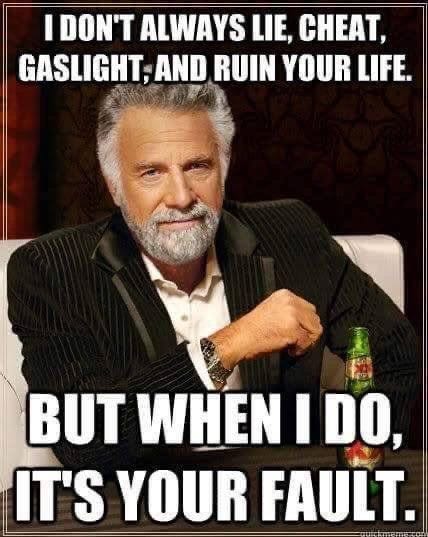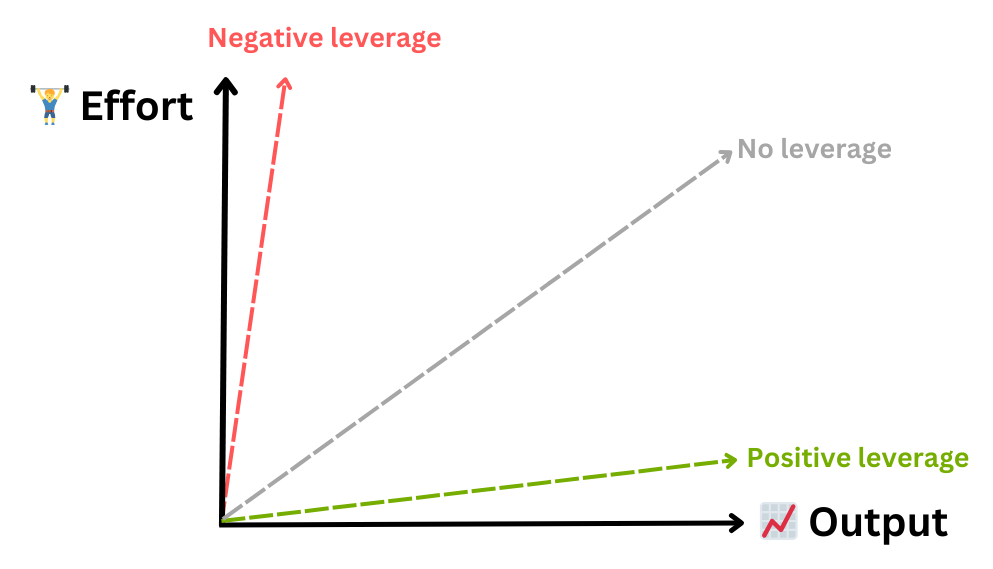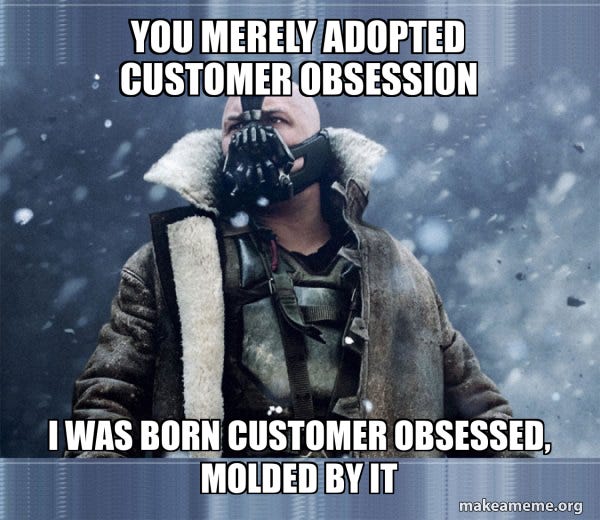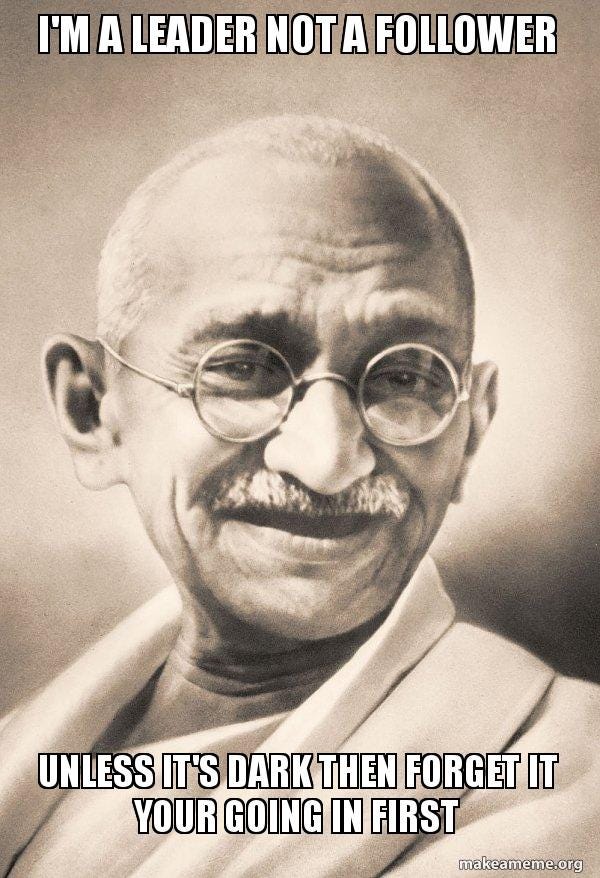Hi and welcome to the Corporate Waters weekly newsletter 🙌
I’m Mikhail and I'm excited to share my learnings to help you navigate the complex waters of product management, leadership, and corporate dynamics. Subscribe to unlock the full value
A few years back, I had a one-on-one with my manager. He inquired how frequently and openly I share feedback with my direct reports. I did share it, candidly and frequently. However, there was a catch. I adhered to the famous axiom “Praise publicly, criticize in private”. All the feedback I shared happened behind closed doors in private settings.
After hearing this, he told me, “Then you’re the only one who cares”.
This meant I had to repeatedly reinforce this feedback with each direct report, rather than the organization doing so itself. To put it another way, I was creating zero leverage.
Contrast this with group-level feedback. Once the team hears and internalizes it, more people care and self-reinforce it. You’ve effectively multiplied yourself.
This event triggered a chain reaction. Where am I missing out on leverage? How can I, as a manager, multiply my output with less effort? How can I create conditions that enable my direct reports to multiply themselves?
Let’s dive into it and figure this out together.

⚖️ What is leverage?
Put simply, leverage is an activity which, after being performed once, can self-reinforce itself by other people, automation, or processes.
In a way, it’s a loop that you can willingly or unwillingly create.
When applied right, the leverage can create compounding results.
If we were to flip this around, no leverage means that you have to do everything by yourself. Every new task requires you to drop some of the current ones. Your effective time and mental resource is all the budget you have available.
Some of the PMs that I worked with became defensive when faced with incremental tasks. “Oh no, not another weekly reporting, that’s a lot of manual effort”. They were operating form a “non-leverage” mindset and maxing out their cognitive budget with existing workload.
Of course, you might have personal leverage as well. For instance, higher competence allows you to do things faster and with higher quality. But you still have to do them yourself. You exchange a unit of your time to get a unit of output. It’s the essence of linear growth.
In order to have compounding effects, you need to find multipliers or points of leverage. I’d even argue that if you want to grow outside of the IC-level roles, you’ll have to learn how to find and apply leverage.
➕➖ Negative/Positive leverage
Positive leverage multiplies output while negative leverage diminishes it.
For instance, micromanagement can be a tactic that diminishes leverage. If applied continuously, managers involvement is going to grow while the outputs of the team will diminish. At it’s absolute, the team won’t be able to operate autonomously from the manager.
Any toxic behaviors can act as a significant negative leverage. For instance, narcissists tend to treat other people condescendingly. That in turn takes the focus away from creative work to friction.
People always prioritize personal psychological safety. That’s why any remote sign of toxicity towards a colleague should not be tolerated as it can literally kill your outcomes.
🔄 Types of leverage
📜 Principles
Principles are codified rules that help the organization automatically create leverage.
Ideally, they are simple (hence easy to pass on) and focused around the fundamental aspects of decision making (e.g., “act like an owner”).
Continuously reinforced, they become internal mantras and How-To’s for employees to create their own leverage.
Of course, principles can backfire as well. For instance, the now classic Uber’s “Super pumped” of the Travis Kalanick era, while pushing people to work at the top of their intensity, led to a lack of restraint and even aggression. While certain parts of the organization benefited from it, others suffered the side-effects of the negative leverage.
Alternatively, fake “declaratory principles” create nothing more than cognitive noise. For instance, “Customer obsessed” can work in the context of Amazon, where systems (e.g., PR-FAQs) and people reinforce it. But in the context of a newly emerging org, customer obsession will mean pretty much nothing. It’s just unclear how it could be put into practice. Hence, such hand-wavy mottos create zero leverage.
⚙️ Systems
Systems are processes that continuously reinforce leverage without much manual effort.
A process can be set up once and go on without the active participation of it’s creator.
For instance, annual strategy planning/quarterly planning are legit systems that focus teams on the essential and provide clarity to stakeholders.
On the other hand, the processes that are set in order to benefit a single or a few people in the org, create zero or negative leverage. For instance, in the beginning of my career I tended to write extensive weekly updates to my manager. The task cost me up to ~2 hours weekly (or 100 h annually, ~12.5 days spent just writing updates). Besides providing clarity to a single person, it added zero other value. Multiple of such reporting processes stacked together, can easily create negative leverage.
💪 Empowerment
Giving smart autonomy to your team and empowering them to do the work without your involvement is a massive leverage. I’m calling it “smart”, because you need to calibrate when and to which extent you should let go off stuff.
Initially it’s tempting to jump in and fix things, but if you do, the leverage will be reduced. Allowing your team to make mistakes and learn from them, that’s what makes compounding effects. At the end of the day, you need someone in your place replicating the same work outputs.
In managerial literature, this relationship is called the “leader-leader” model, meaning that your direct reports are empowered to lead.
The opposite of this model is “leader-follower”, which typically happens in stakeholder-driven or micro-managerial environments. This approach can work temporarily, but in the long term, it makes the team inert and lazy. Why worry when my manager can solve it for me?
Most importantly, your behavior is the role model for your direct reports. Whether you like it or not, they will eventually copy you. They will copy your strong sides and biases. If you diminish their potential by constantly sitting behind their backs, that’s exactly what they are going to do with their direct reports or peers.
🗣️ Feedback
Feedback given in a limited setting will have limited effects or zero leverage. However, explicit feedback given in a group setting will nudge the whole team to think.
For example, five years ago, during a bi-weekly product team demo, my manager challenged the validity of our qualitative testing conclusions (sample size and confirmation bias) after my presentation. Her candid feedback was impactful. To this day, I carefully review our testing methodology before making decisions. This lesson was not only significant for me but also taught a good deal to the entire team. I’d call this positive leverage.
Group-level feedback can also be taken too far. In large gathering events or “All Hands” meetings, critical feedback can backfire as it publicly undermines your employees. One time, I practically bashed my manager in an “All Hands” meeting, judging the suboptimal work quality (as it seemed to me back then). This was one of the biggest contributing factors to him leaving the company.
📊 Case studies
Let’s get to the specifics. Below I’m going to share practical examples of organizational leverage at Bolt + cases from my personal toolkit that work wonders. An x10 ROI is guaranteed.







